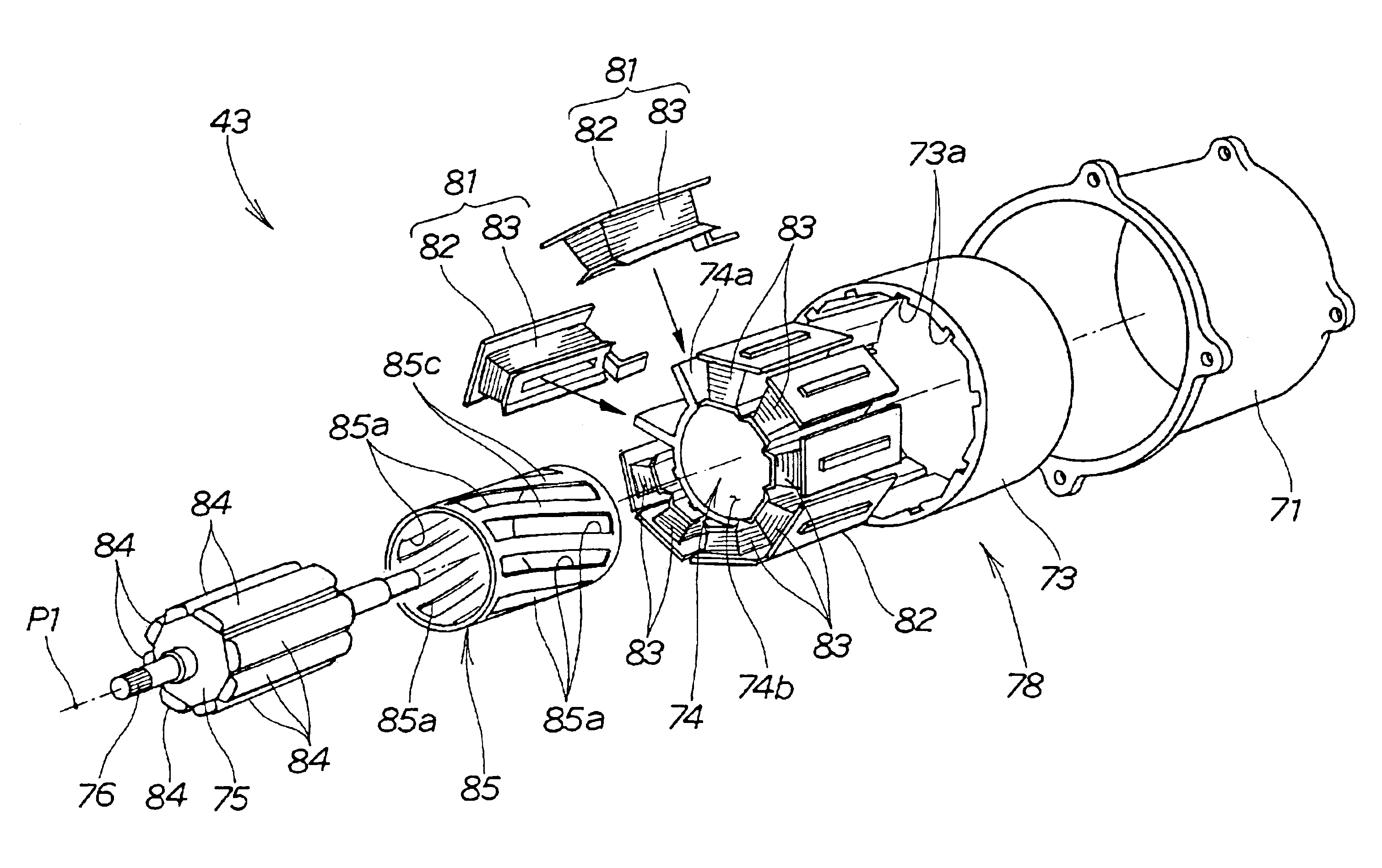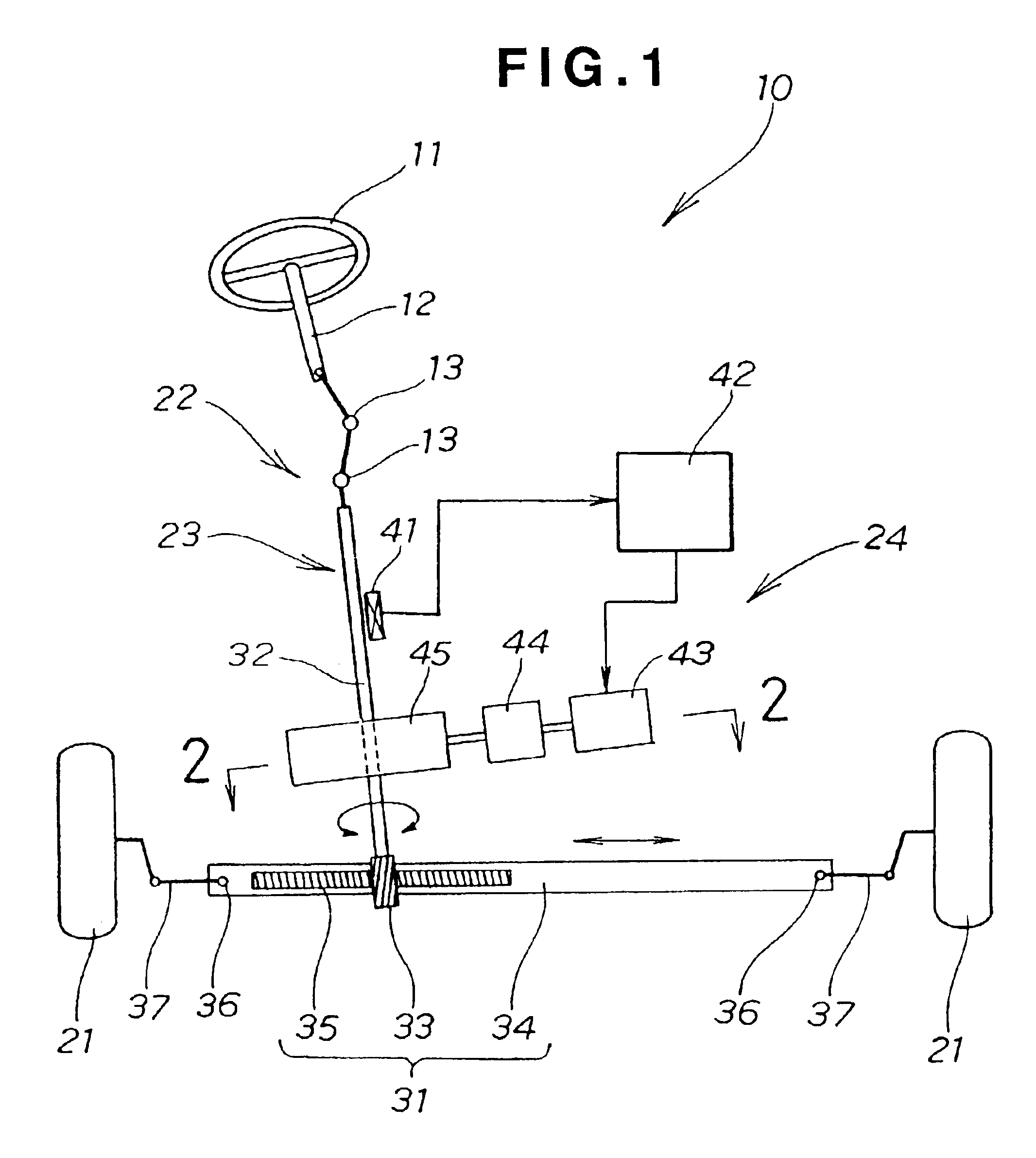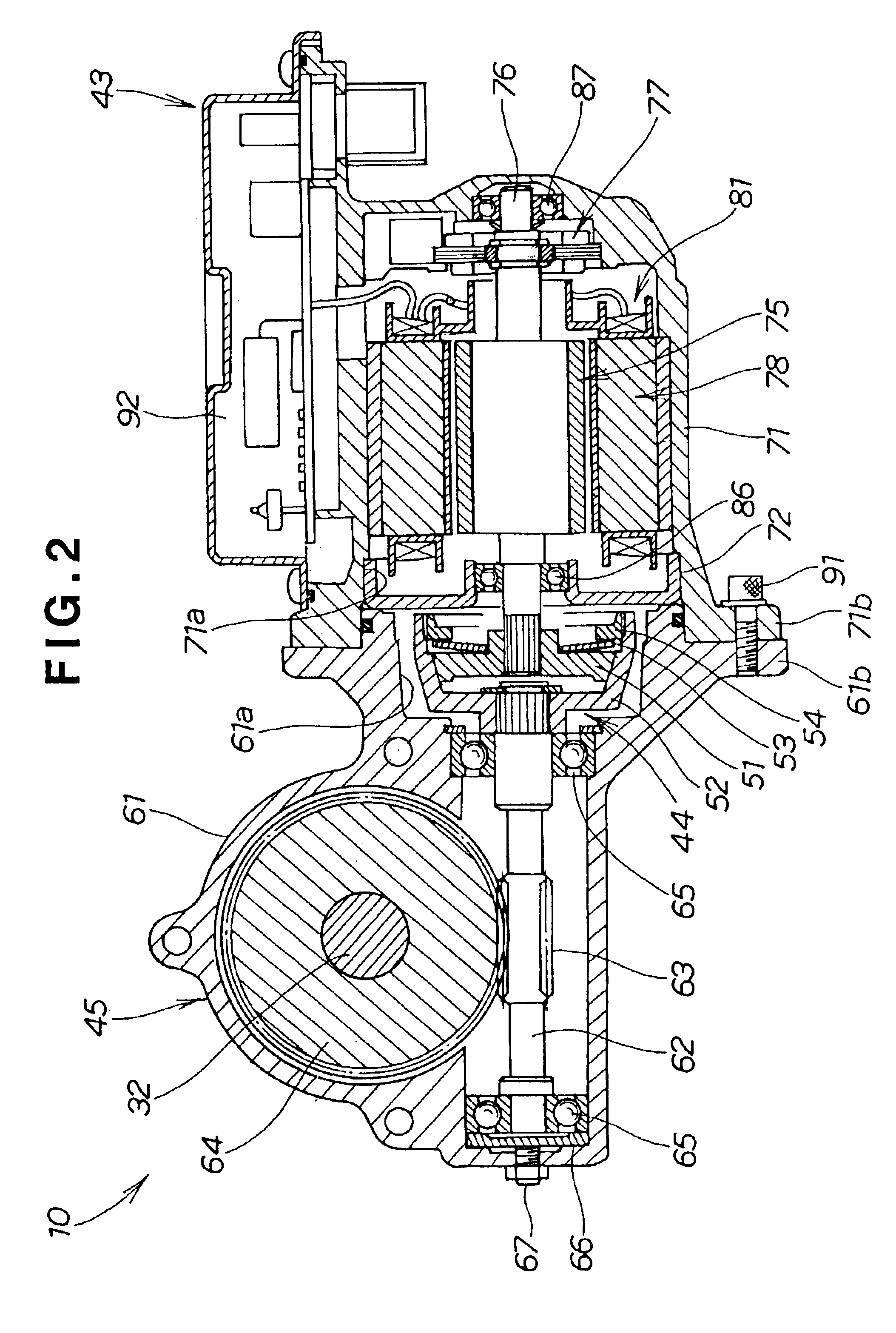Brushless motor and electric power steering apparatus equipped with the brushless motor
a brushless motor and electric steering technology, which is applied in the direction of magnetic circuit rotating parts, magnetic circuit shape/form/construction, transportation and packaging, etc., can solve the problem of uneven air gap between the surface of the magnet secured to the rotor and the rotor-side surface of the stator, and achieves the effect of minimizing influence, enhancing steering wheel feel, and minimizing cogging torqu
- Summary
- Abstract
- Description
- Claims
- Application Information
AI Technical Summary
Benefits of technology
Problems solved by technology
Method used
Image
Examples
second embodiment
FIGS. 12A, 12B and 12C show the inner rotor 75 in the second embodiment, where the permanent magnets 184 are secured to the outer surface of the inner rotor 75. The illustrated example of FIG. 12A assumes that the uppermost position is a 0° angular position which is followed by 90°, 180° and 270° angular positions in the clockwise direction of the figure.
Each of the permanent magnets 184 is divided into halves in the longitudinal or axial direction of the rotation shaft of the rotor 75 (motor shaft 76), to provide two divided magnet members, i.e. first and second divided magnet members 184A and 184B. The first and second divided magnet members 184A and 184B have generally the same length, but the first and second divided magnet members 184A and 184B are positioned along the longitudinal or axial direction of the inner rotor 75 in horizontally opposite orientations.
Specifically, a plurality of the first divided magnet members 184A are collectively placed on one longitudinal half of t...
third embodiment
Next, a description will be given about the brushless motor for use in the electric power steering apparatus, with reference to FIGS. 14 to 17.
The third embodiment of the brushless motor 243 is different from the second embodiment 143 of FIG. 10 in terms of the construction of the plurality of permanent magnets 284. Except for the permanent magnets 284, the third embodiment 243 is similar in construction to the second embodiment 143. In the third embodiment 243, the elements represented by the same reference numerals as in the second embodiment 143 are constructed in the same manner as the counterparts in the second embodiment 143 and will not be described here to avoid unnecessary duplication. Note that the third embodiment of the brushless motor 243 does not have the magnetic cover 85 of FIG. 3 employed in the first embodiment.
FIG. 15 shows portions of the outer stator 78 and inner rotor 75 of FIG. 14 on a magnified scale.
As seen in FIG. 15, the inner rotor 75 has a sectional shap...
first embodiment
Further, the magnetic cover 85 employed in FIG. 5 maybe formed of any desired magnetic material.
Moreover, each of the permanent magnets 184 and 284 in the second and third embodiment may be divided into any other suitable number of magnet members than just two.
PUM
 Login to View More
Login to View More Abstract
Description
Claims
Application Information
 Login to View More
Login to View More - R&D
- Intellectual Property
- Life Sciences
- Materials
- Tech Scout
- Unparalleled Data Quality
- Higher Quality Content
- 60% Fewer Hallucinations
Browse by: Latest US Patents, China's latest patents, Technical Efficacy Thesaurus, Application Domain, Technology Topic, Popular Technical Reports.
© 2025 PatSnap. All rights reserved.Legal|Privacy policy|Modern Slavery Act Transparency Statement|Sitemap|About US| Contact US: help@patsnap.com



